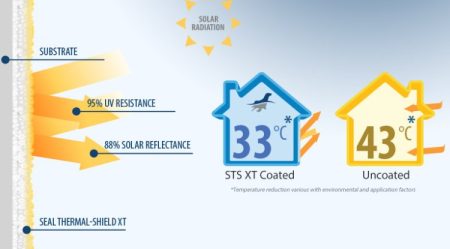Radiation Isolation: Safeguarding Public Health and Well-being
Radiation isolation plays a crucial role in safeguarding public health and well-being. With the increasing use of radiation in various industries and applications, it is essential to understand the importance of effective radiation isolation measures. In this article, we will explore the significance of radiation isolation, its benefits, and the strategies employed to ensure the safety of individuals and the environment.
Contents
Understanding Radiation and Its Risks
Radiation is a form of energy that can be found naturally in the environment or generated by human activities. While it has numerous beneficial applications, such as medical imaging and power generation, exposure to radiation can pose significant health risks.
1. The Dangers of Uncontrolled Radiation Exposure
Uncontrolled radiation exposure can lead to various health problems, including radiation sickness, genetic mutations, and an increased risk of cancer. It is crucial to limit exposure and implement proper radiation isolation practices.
2. The Importance of Radiation Isolation
Radiation isolation refers to the implementation of measures to contain and control radiation sources. It aims to minimize or eliminate the release of radiation into the surrounding environment, reducing the risks associated with radiation exposure.
3. Benefits of Radiation Isolation
Effective radiation isolation offers several benefits, including:
- Protection of Public Health: By preventing the release of radiation into the environment, radiation isolation safeguards the health of individuals and communities.
- Preservation of the Environment: Radiation isolation measures help minimize the impact of radiation on ecosystems and prevent contamination of air, water, and soil.
- Enhanced Safety for Workers: Proper radiation isolation practices ensure the safety of workers who handle radioactive materials or work in radiation-prone environments.
Strategies for Radiation Isolation
Several strategies are employed to achieve effective radiation isolation. These strategies involve both engineering controls and administrative measures to minimize radiation exposure.
1. Engineering Controls:
- Shielding: The use of radiation shielding materials, such as lead or concrete, helps absorb and block radiation, protecting individuals and the environment from its harmful effects.
- Containment Systems: The design and implementation of robust containment systems prevent the release of radioactive materials, ensuring they remain isolated and controlled.
2. Administrative Measures:
- Regulatory Compliance: Compliance with radiation safety regulations and guidelines set by regulatory authorities is crucial to maintain high standards of radiation isolation.
- Training and Education: Proper training and education programs ensure that workers and individuals are aware of radiation risks, understand safety protocols, and know how to handle radioactive materials safely.
- Monitoring and Inspection: Regular monitoring and inspection of radiation sources, facilities, and equipment help identify potential issues and ensure compliance with safety standards.
Frequently Asked Questions
Q1: What are the risks of uncontrolled radiation exposure? A1: Uncontrolled radiation exposure can lead to radiation sickness, genetic mutations, and an increased risk of cancer.
Q2: How does radiation isolation benefit public health? A2: Radiation isolation protects public health by preventing the release of radiation into the environment, minimizing the risks of radiation exposure.
Q3: What are some engineering controls used for radiation isolation? A3: Engineering controls include the use of radiation shielding materials and the design of robust containment systems.
Q4: How can individuals contribute to radiation isolation? A4: Individuals can contribute to radiation isolation by following safety protocols, participating in training programs, and reporting any radiation safety concerns.
Q5: Why is regulatory compliance essential for radiation isolation? A5: Regulatory compliance ensures that organizations and industries adhere to radiation safety standards, promoting effective radiation isolation practices.





